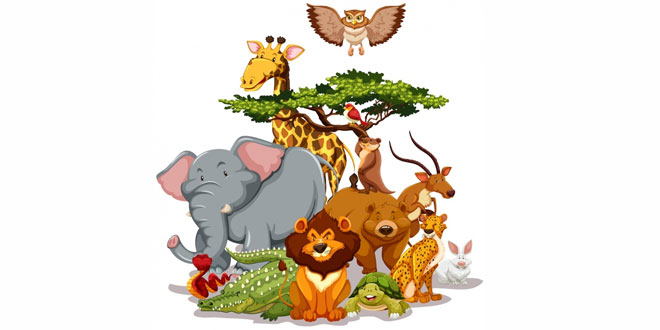[Page 3]
Question: Name the elements that determine the weather of a place.
Answer: The elements that determine the weather of a place are temperature, humidity, rainfall, and wind speed.
Question: When are the maximum and minimum temperatures likely to occur during the day?
Answer: The maximum temperature of the day occurs in the afternoon while the minimum temperature occurs early in the morning.
Question: Which of the two changes frequently, weather or climate?
Answer: Weather changes frequently.
Question: What do you understand by weather of the place?
Answer: The day to day condition of the atmosphere at a place with respect to the temperature, humidity, rainfall, wind speed, etc, is called the weather at that place.
Weather, Climate and Adaptations of Animals to Climate – Question: The tropical rain forest has a large population of animals. Explain why it is so.
Answer: The climate of tropical rain forests is generally hot and humid with continuous rain. These hospitable climatic conditions support huge populations of plants and animals.
Question: Explain, with examples, why we find animals of certain kind living in particular climatic conditions.
Answer: Certain kind of animals can be found in particular climatic conditions as they can adapt well to those conditions. For example, a polar bear is adapted for polar regions. It has a thick skin and a layer of fat to keep it warm in cold conditions. However, with these adaptations, it will not be possible for it to survive in tropical region where it is hot. Similarly, a monkey is adapted to live in the forests with features such as long and sturdy tail, loud voice, etc. These features are of no importance in polar regions where vegetation is very less. Therefore, certain types of animals live only in certain climatic conditions.
Question: How do elephant living in the tropical rain forest adapt itself.
Answer: An important and widely found animal of Indian tropical rain forests is the elephant. It has adapted remarkably to the conditions of this region. Some of the adaptations are as follows:
- It uses its trunk as nose so that it has a strong sense of smell.
- Its trunk is also used for picking up food.
- Its tusks are used to tear bark of trees. It can eat barks of trees.
- The soles of their feet are covered with thick pads. These pads can handle their enormous weight. They also prevent sound so that the elephants can move silently.
- Its large ears have strong sense of hearing.
Weather, Climate and Adaptations of Animals to Climate – Question: Is wind a factor affecting climate?
Answer: Yes, because of its direction maybe it comes from America which is a cold place right NOW example going to Philippines which has a hot temperature therefore if the temperature of the wind is cold/hot coming from that particular place the place it should go to could have the opposite temperature of the place that the wind is coming from.
Question: What is camouflage? Why is camouflage important for animals?
Answer: Camouflage is the built-in protection in the animals which increase their chances of survival by tricking predators.
Many tropical animals have sensitive hearing, sharp eyesight, thick skin and a skin colour which helps them to camouflage by blending with the surroundings. This helps them to protect themselves from predators. For Example, big cats like lions and tigers have thick skin and sensitive hearing.
 Class Notes NCERT Solutions for CBSE Students
Class Notes NCERT Solutions for CBSE Students


